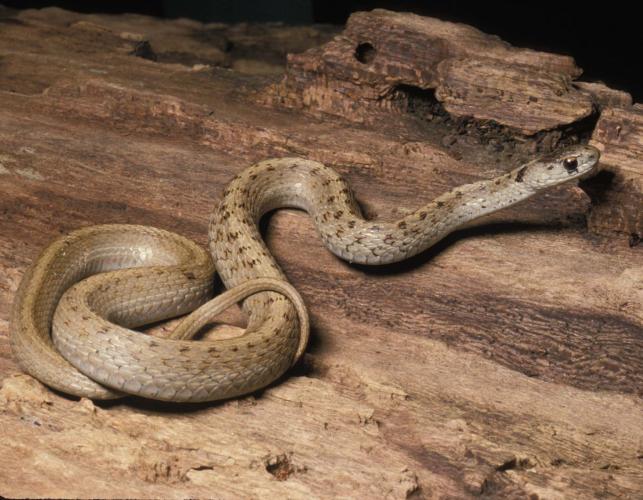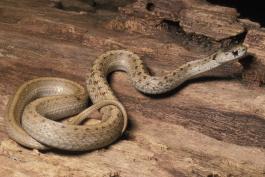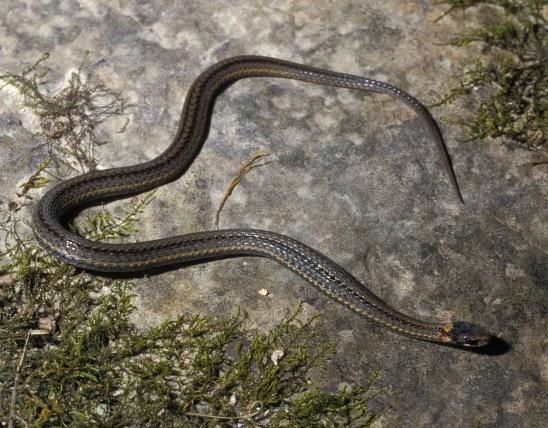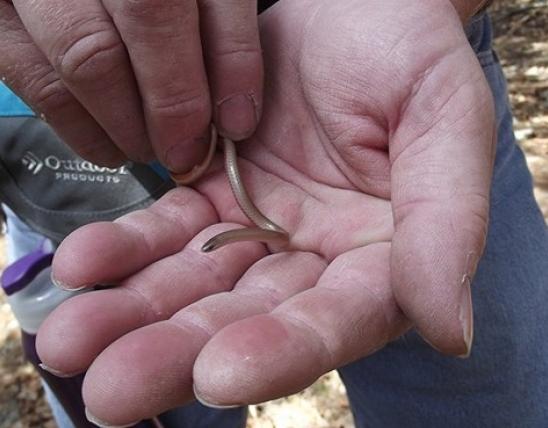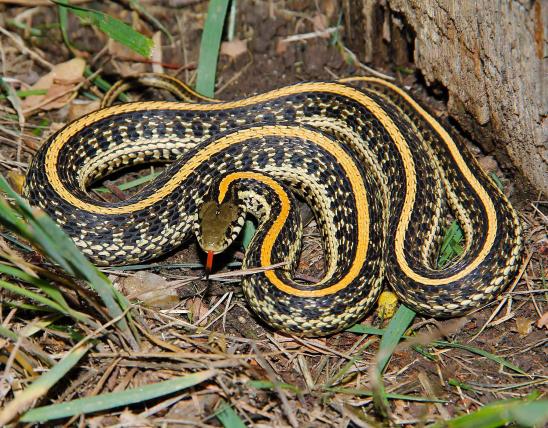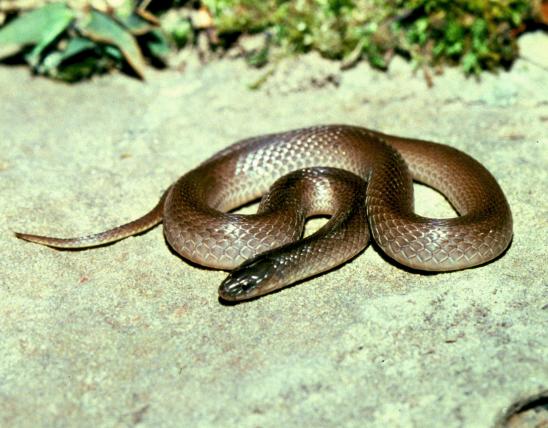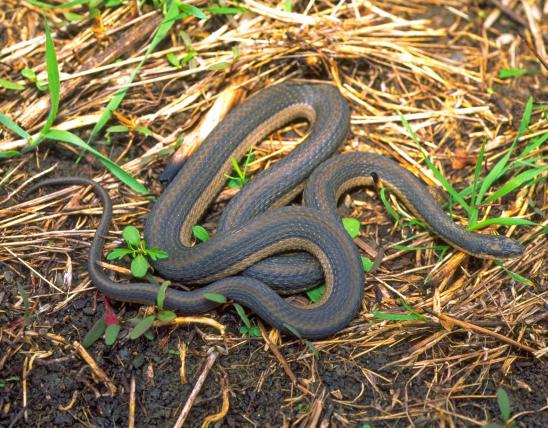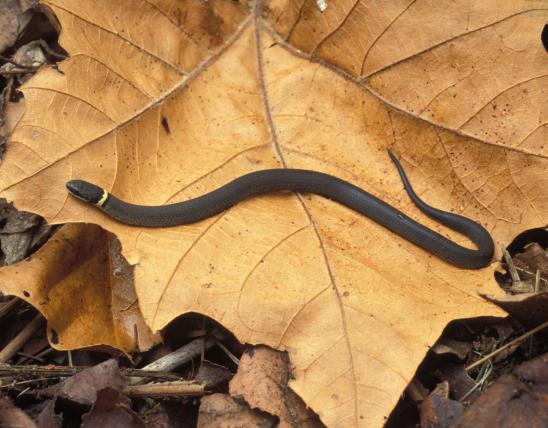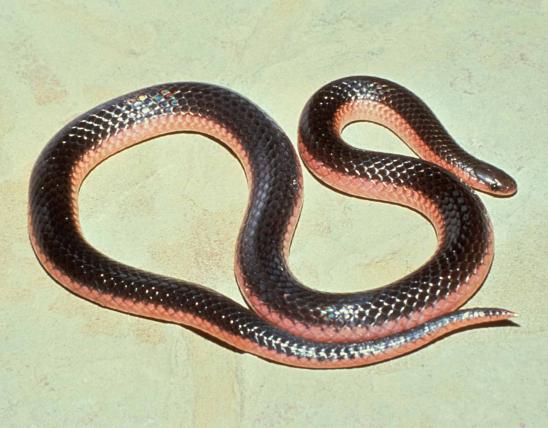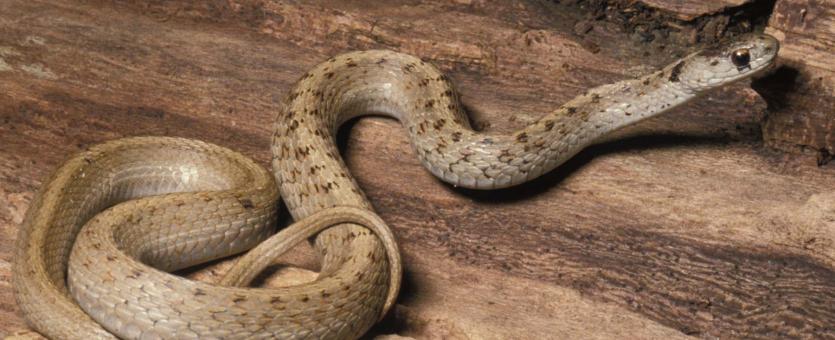
Dekay's brownsnake is a small, secretive species that prefers moist environments. It is a close relative of the red-bellied snake. The general color may be gray to brown to reddish brown. There is usually a tan stripe running down the back, bordered by 2 rows of small brown spots. These small spots are usually connected by a narrow brown line. The top of the head is usually dark. A dark spot is present under each eye and on each side of the neck. The belly may be cream colored, yellow, or pink.
Similar species:
- Dekay's brownsnake is a close relative of the red-bellied snake.
- Dekay's brownsnake used to be divided into subspecies, including the midland brownsnake (Storeria dekayi wrightorum) and the Texas brownsnake (Storeria dekayi texana). Those are no longer considered distinct subspecies.
Adult length: 9 to 13 inches; occasionally to 20 inches.

Presumed to occur statewide. Apparently less common in the southeastern part of the state.
Habitat and Conservation
Active from late March to early November, this species can be found under logs, rocks, boards, or other objects. The most common habitats in Missouri are moist forests or woodlands, especially along the edges of ravines, creeks, and river floodplains. Other Missouri habitats include prairies and grasslands that are near wetlands and woodlands; they also occur in urban areas such as parks, cemeteries, and yards, where shelter, moisture, and food are abundant.
Dekay's brownsnakes are sometimes seen crossing trails and roads in spring and fall. In hot weather, they may be active at night.
Food
Brownsnakes eat earthworms, slugs, land snails, and soft-bodied insects. One study found the diet was 75 percent slugs and 25 percent earthworms.
Biologists suspect that the blunt head and elongated teeth of this snake and the closely related red-bellied snake helps them to grip and tug persistently on a snail's body until the snail fatigues and can be pulled out of its shell.
Status
Harmless nonvenomous snake.
Because of its diet including slugs and snails, which are considered by many to be injurious to cultivated plants, this snake is generally considered beneficial to human interests.
Life Cycle
Mating generally occurs soon after these snakes emerge from their overwintering retreats, but it can also occur in autumn. Females give birth to live young between mid-July and September; litters comprise 3–41 young. Individuals become sexually mature at age two or three. A snake captured in the wild as an adult lived in captivity for 7 more years, so the lifespan may be at least 9 years. In the wild, the lifespan no doubt is much lower.
Human Connections
This small snake is harmless to people. It is not known to bite, but when captured it will flatten its head and neck and release a musky secretion at the base of the tail.
Gardeners who persecute this snake are doing themselves a disservice, for brownsnakes eat slugs, which are a bane to gardeners. Defenseless except for flattening their heads and necks, and pooping on their captors, these snakes are completely harmless and do humans much good.
This snake was named in honor of James Ellsworth De Kay (1792–1851), a zoologist, MD, and traveler who collected the first scientific specimen of this animal. A number of extinct animals (known only as fossils) were also named after him: two trilobites, a sea scorpion, a nautilus, and a dinosaur-like marine reptile from the late Cretaceous.
Ecosystem Connections
As predators, these snakes control populations of the invertebrates they consume.
But snakes, especially small ones, are preyed upon themselves. The defenseless newborns are gobbled by numerous animals. The adults, being small and defenseless except for their ability to smear stinky stuff, are eaten by many animals. In northwestern Missouri, brownsnakes are an important food for young prairie massasaugas.
